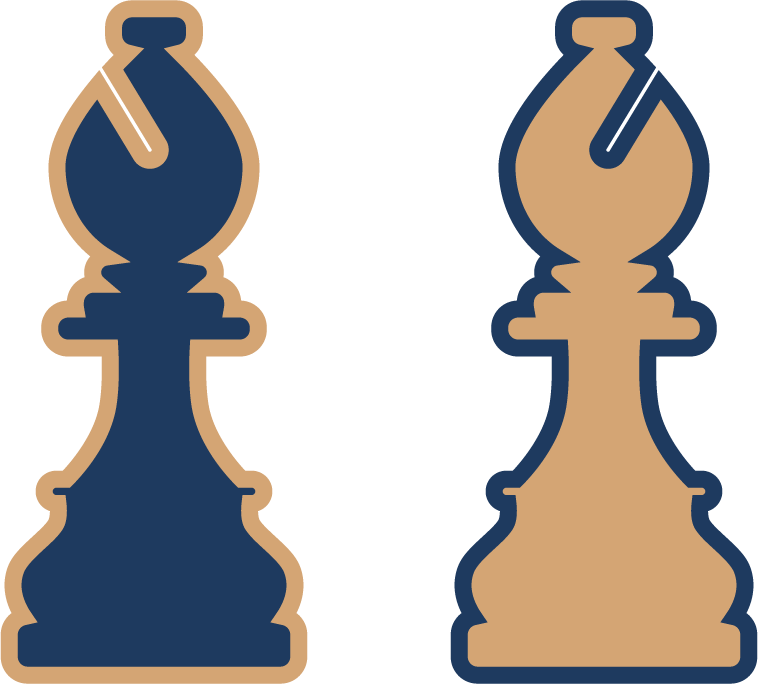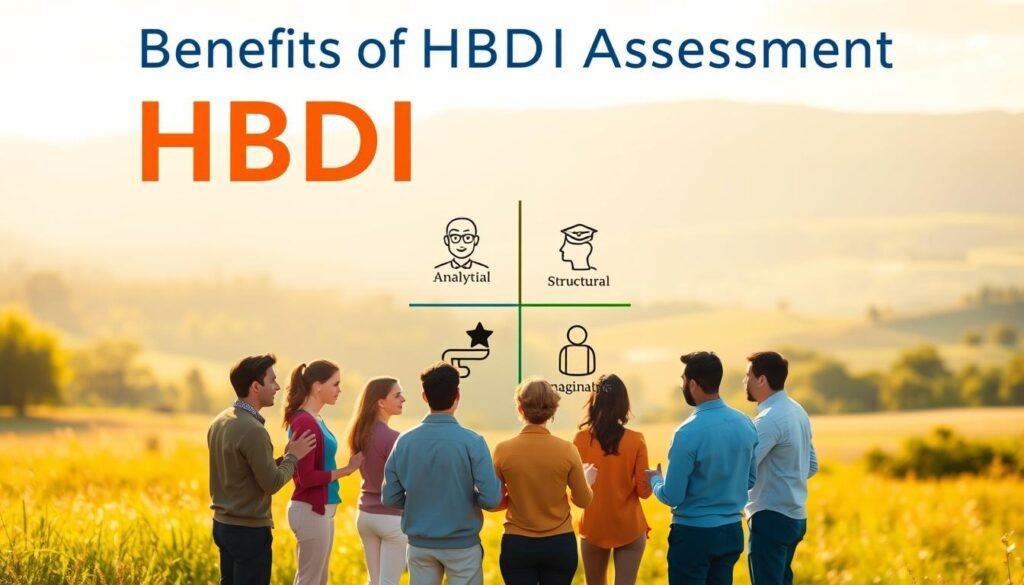Have you ever wondered why you think the way you do? Or why others approach problems differently? The Herrmann Brain Dominance Instrument® (HBDI) is here to answer these questions. It’s not just another personality test—it’s a tool that reveals your unique thinking style.
Backed by over 40 years of brain-based research, the HBDI uses the Whole Brain® framework to measure cognitive diversity. It helps you understand how you process information, make decisions, and solve problems. This insight can improve communication, boost innovation, and enhance teamwork.
What sets the HBDI apart is its foundation in neuroscience and positive psychology. It’s more than a one-time assessment—it’s a guide for ongoing professional growth. Whether you’re a leader, educator, or team member, this tool can transform the way you think and work.
Key Takeaways
- The HBDI is the world’s leading thinking styles assessment tool.
- It measures cognitive diversity using the Whole Brain® framework.
- Improves communication, decision-making, and innovation.
- Validated by neuroscience and positive psychology principles.
- Supports ongoing professional development.
Introduction to the HBDI Assessment
Discover how your brain processes information with a groundbreaking assessment tool. The Herrmann Brain Dominance Instrument® (HBDI) is designed to map your thinking preferences and unlock your cognitive potential. Unlike traditional personality tests, it focuses on how you think, not just who you are.
What is the HBDI?
Developed by Ned Herrmann, the HBDI combines neuroscience with cognitive diversity research. It’s based on the Whole Brain® model, which categorizes thinking styles into four quadrants: analytical, practical, relational, and experimental. This framework helps individuals and teams understand their strengths and areas for growth.
The Science Behind the HBDI
The HBDI is rooted in split-brain theory and validated by EEG studies and peer-reviewed research. It’s more than just an assessment—it’s a scientifically-backed tool for leadership development and team optimization. Today, 80% of Fortune 100 companies use it to enhance communication, innovation, and decision-making.
Industries like tech, healthcare, and education have embraced the HBDI to foster collaboration and drive results. Whether you’re a leader or a team member, this brain dominance instrument® can transform the way you work and interact with others.
Understanding the Four Quadrants of HBDI
What if your brain’s preferences could unlock your potential? The four quadrants of thinking styles provide a framework to understand how you process information and solve problems. Each quadrant represents a unique approach, from logical analysis to creative innovation.
Analytical Thinking (A Quadrant)
Analytical thinkers excel in data-driven tasks. They thrive in roles like engineering or financial modeling, where logical reasoning is key. For example, an A Quadrant professional might solve complex equations or analyze market trends with precision.
Practical Thinking (B Quadrant)
Practical thinkers are detail-oriented and process-focused. They shine in project management or accounting, creating Gantt charts or optimizing workflows. Their ability to organize and execute ensures projects stay on track.
Relational Thinking (C Quadrant)
Relational thinkers are natural collaborators. They excel in HR or team leadership, building morale and resolving conflicts. Their emotional intelligence fosters strong relationships and cohesive teams.
Experimental Thinking (D Quadrant)
Experimental thinkers are innovators. They drive disruptive ideas in R&D or marketing, focusing on big-picture strategies. Their creativity fuels groundbreaking solutions and out-of-the-box thinking.
Most people have 1-2 dominant quadrants, but developing others can enhance versatility. Understanding your thinking preferences helps you leverage strengths and grow in new areas.
Benefits of the HBDI Assessment
Understanding your thinking style can transform how you approach challenges. The Herrmann Brain Dominance Instrument® offers valuable insights into your cognitive preferences, helping you unlock your full potential. From personal growth to improved teamwork, the benefits of this assessment are far-reaching.
Personal Growth and Self-Awareness
One of the key benefits is enhanced self-awareness. By recognizing your dominant thinking style, you can identify your strengths and areas for improvement. This knowledge empowers individuals to make intentional choices in their personal and professional lives.
For example, 63% of users report better conflict resolution skills after completing the assessment. This shows how understanding your thinking style can lead to more effective communication and problem-solving.
Enhanced Team Collaboration
Teams that embrace cognitive diversity often outperform homogeneous groups. Mixed-quadrant teams bring a variety of perspectives, leading to innovative solutions and faster project completion. In fact, teams using this tool show a 41% increase in project efficiency.
Case studies, like a sales team balancing analytical and relational thinking, demonstrate how tailored approaches improve client presentations and outcomes. This highlights the value of diverse thinking styles in achieving shared goals.
Improved Decision-Making
Understanding how you and others think can lead to better decision-making. By leveraging the strengths of each team member, organizations can address challenges more effectively. Companies using this tool report a 22% higher employee retention rate, showcasing its impact on workplace satisfaction.
Leadership development programs at companies like IBM and Coca-Cola have successfully integrated this assessment to foster growth and innovation. This proves its effectiveness in driving meaningful change.
How to Take the HBDI Assessment
Uncover the secrets of your thinking style with a simple online test. The HBDI assessment is designed to provide insights into your cognitive preferences. It’s a straightforward process that takes just 20-30 minutes to complete.
Step-by-Step Guide to Completing the Assessment
To begin, register on the Herrmann Solutions platform. The test consists of 120 questions, each presenting preference-based scenarios. For example, you might encounter statements like, “When solving problems, I prefer…” Your responses will help map your thinking style.
The questions are designed to measure how you approach tasks and challenges. They focus on your natural preferences rather than learned behaviors. This ensures the results accurately reflect your cognitive strengths.
Interpreting Your Results
Once completed, your results will display as a color-coded “brain profile.” Each color represents a thinking style: Blue (A) for analytical, Green (B) for practical, Red (C) for relational, and Yellow (D) for experimental. Percentile scores show how strongly you lean toward each style.
Overlap areas, such as A/D thinkers, indicate versatility in roles like data science. These insights can help you understand your unique way of thinking and how it impacts your work and relationships.
For a deeper understanding, consider discussing your results with a certified practitioner. They can provide personalized guidance on leveraging your strengths and addressing areas for growth.
Applying HBDI in the Workplace
Transforming workplace dynamics starts with understanding how people think. The Herrmann Brain Dominance Instrument® provides a framework to enhance collaboration, communication, and problem-solving. By leveraging cognitive diversity, organizations can build stronger teams and drive meaningful results.
Building Diverse and Effective Teams
Creating a balanced team is key to success. For example, a tech startup might hire a mix of analytical (A), experimental (D), relational (C), and practical (B) thinkers. This blend ensures diverse perspectives and innovative solutions.
Microsoft uses this approach in hackathons, structuring teams for maximum creativity. Studies show that 78% of managers report improved cross-departmental collaboration after implementing this strategy.
Tailoring Communication Styles
Effective communication requires understanding how others think. For analytical thinkers, focus on data and logic. Relational thinkers respond better to stories and emotional appeals. This “Quadrant-Speak” approach ensures clarity and engagement.
Zoom, for instance, uses this method to design user experiences that cater to different thinking styles. This enhances usability and customer satisfaction.
Driving Innovation and Problem-Solving
Innovation thrives when diverse minds collaborate. Frameworks like Disney’s Creative Strategy rely on experimental (D) thinkers to generate bold ideas. Balancing this with practical (B) thinkers ensures feasibility.
Conflict resolution also benefits from this approach. For example, addressing clashes between analytical (A) and relational (C) thinkers involves finding common ground. This fosters harmony and productivity.
By applying these principles, organizations can tackle challenges more effectively and foster a culture of continuous improvement.
HBDI for Personal Development
Personal growth begins with understanding how you think and process information. The Herrmann Brain Dominance Instrument® offers a unique approach to self-discovery, helping individuals identify their cognitive preferences and unlock their potential. By leveraging this tool, you can create a roadmap for both personal and professional growth.
Identifying Your Strengths and Weaknesses
The first step in personal development is recognizing your strengths and areas for improvement. This assessment provides a clear picture of your dominant thinking style, whether it’s analytical, practical, relational, or experimental. For example, if you score high in the relational quadrant, you might excel in coaching or team leadership.
Understanding your strengths allows you to focus on what you do best. At the same time, identifying weaker areas helps you set targeted goals. Tools like MindMapping for creative thinkers or Six Sigma for detail-oriented professionals can support your development journey.
Setting Personal and Professional Goals
Once you know your cognitive preferences, you can set SMART goals to enhance your skills. For instance, improving practical thinking might involve mastering project management tools like Asana in the next quarter. These goals should align with your dominant quadrants while addressing areas for growth.
Studies show that 89% of users create targeted development plans after completing the assessment. This structured approach ensures measurable progress and keeps you motivated to achieve your objectives.
Continuous Learning and Improvement
Personal development is an ongoing process. Platforms like LinkedIn Learning offer courses tailored to different thinking styles, helping individuals build new skills. For example, experimental thinkers might explore innovation-focused courses, while analytical thinkers could dive into data analysis.
Neuroplasticity research shows that consistent brain training can shift quadrant scores by up to 15% in six months. TED Talks aligned with your thinking style can also inspire and reinforce your learning. By embracing continuous improvement, you can tackle new challenges with confidence.
Case Studies: Success Stories with HBDI
Real-world examples show how understanding thinking styles can drive success. From individuals to large organizations, the application of cognitive diversity principles has led to measurable improvements in innovation, efficiency, and collaboration. Let’s explore some inspiring stories.
Individual Success Stories
One standout example is a Goldman Sachs analyst who used insights from the assessment to transition into a C-suite role. By leveraging their analytical strengths and developing relational skills, they improved leadership capabilities and team dynamics. This transformation highlights how self-awareness can open new career paths.
Team Transformations
Airbnb’s product team achieved remarkable results by aligning their thinking styles. By balancing experimental and practical quadrants, they reduced product launch timelines by 20%. This approach ensured creative ideas were executed efficiently, leading to faster innovation cycles.
NASA also optimized astronaut teams for Mars simulation projects. By understanding each member’s cognitive preferences, they improved communication and problem-solving during high-stakes missions. This case demonstrates the power of diverse thinking in achieving complex goals.
Organizational Impact
SAP saw a 37% increase in innovation output after implementing the assessment across the organization. By fostering a culture of cognitive diversity, they unlocked new solutions and improved collaboration across departments.
Procter & Gamble saved $2 million by redesigning supply chain processes based on thinking style insights. This strategic approach streamlined operations and enhanced decision-making, showcasing the financial benefits of cognitive alignment.
Even in education, a school district boosted test scores by aligning teaching methods with educators’ dominant quadrants. This tailored approach improved student engagement and learning outcomes, proving the versatility of these principles across different areas.
These success stories illustrate the transformative potential of understanding thinking styles. Whether it’s improving individual performance, enhancing team dynamics, or driving organizational change, the results speak for themselves.
Comparing HBDI with Other Personality Assessments
Exploring different personality assessments can help you find the right tool for understanding yourself and others. While many tests exist, each has a unique approach and focus. Let’s compare the Herrmann Brain Dominance Instrument® with popular assessments like MBTI, DiSC, and StrengthsFinder.
HBDI vs. MBTI
The MBTI categorizes individuals into 16 personality types, while the Herrmann Brain Dominance Instrument® uses a quadrant model to measure thinking styles. MBTI has a 93% test-retest reliability, slightly higher than the HBDI’s 89%. However, the HBDI’s focus on cognitive patterns makes it ideal for understanding how people process information and solve problems.
HBDI vs. DiSC
DiSC emphasizes behavioral traits like Dominance and Influence, while the HBDI examines cognitive preferences. For example, DiSC might highlight how someone communicates, whereas the HBDI reveals their preferred thinking styles. This makes the HBDI a better tool for team cognition and innovation.
HBDI vs. StrengthsFinder
StrengthsFinder identifies 34 talents, complementing the HBDI’s quadrant profiles. While StrengthsFinder focuses on individual strengths, the HBDI provides insights into cognitive areas. Together, they offer a comprehensive view of personal and professional development.
When deciding which test to use, consider your goals. The HBDI excels in team cognition, while the Enneagram is better for understanding motivations. Google’s People Analytics team, for instance, combines the HBDI with the Big Five to optimize team dynamics and performance.
Conclusion: Unlocking Your Potential with HBDI
Cognitive diversity is a powerful tool for personal and professional growth. By understanding your thinking style, you can unlock new opportunities and improve collaboration with others. The HBDI assessment provides valuable insights into how you and your team process information, solve problems, and innovate.
The benefits of this tool extend beyond the workplace. From career pivots to retirement planning, it offers lifelong applications for individuals seeking to maximize their potential. With 94% of users recommending it to colleagues, the HBDI has proven its value in enhancing communication and decision-making.
Ready to start your journey? Download a sample report or connect with certified practitioners to explore your Whole Brain® profile. Embrace cognitive diversity and transform the way you think, work, and lead.
FAQ
What is the Herrmann Brain Dominance Instrument?
The Herrmann Brain Dominance Instrument is a tool that helps individuals and teams understand their thinking preferences. It categorizes thinking styles into four quadrants: Analytical, Practical, Relational, and Experimental.
How does the HBDI assessment work?
The HBDI assessment involves answering a series of questions that identify your preferred thinking styles. The results are mapped onto the four quadrants, providing insights into your strengths and areas for growth.
What are the benefits of taking the HBDI assessment?
The HBDI assessment offers several benefits, including enhanced self-awareness, improved team collaboration, and better decision-making. It also helps in tailoring communication styles and driving innovation.
How can I apply HBDI results in the workplace?
Applying HBDI results in the workplace involves building diverse teams, tailoring communication to different thinking styles, and using the insights to solve problems and drive innovation effectively.
How does HBDI compare to other personality assessments like MBTI or DiSC?
Unlike MBTI or DiSC, which focus on personality traits, the HBDI focuses on thinking preferences. It provides a framework for understanding how individuals and teams approach tasks and solve problems.
Can the HBDI assessment help with personal development?
Yes, the HBDI assessment is a valuable tool for personal development. It helps identify strengths and weaknesses, set personal and professional goals, and supports continuous learning and improvement.
What is the science behind the HBDI?
The HBDI is based on neuroscience and the Whole Brain® Model, which explains how different parts of the brain influence thinking styles. This scientific foundation ensures the assessment’s accuracy and reliability.
How do I interpret my HBDI results?
Interpreting your HBDI results involves understanding the four quadrants and how your scores in each area reflect your thinking preferences. This insight helps you leverage your strengths and address areas for growth.
Are there any success stories or case studies using HBDI?
Yes, there are numerous success stories and case studies that demonstrate the impact of HBDI on individuals, teams, and organizations. These examples highlight improved collaboration, innovation, and overall performance.
What is the step-by-step process for taking the HBDI assessment?
The process involves registering for the assessment, completing the questionnaire, and receiving a detailed report. The report provides insights into your thinking preferences and offers actionable recommendations.


